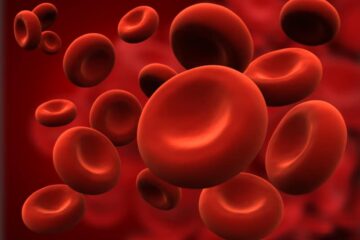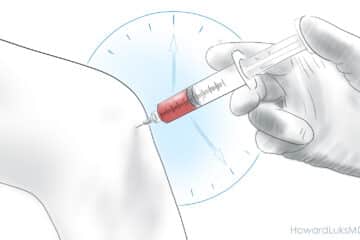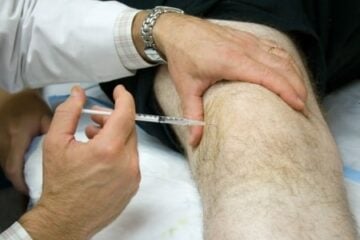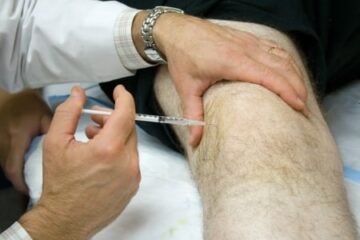
New research shows PRP injection (Platelet-Rich Plasma) is being used in orthopaedics with increasing frequency and effectiveness for sports injuries and osteoarthritis. PRP is also helping some athletes to avoid surgery.
Tiger Woods, Kobe Bryant, Alex Rodriquez, Hines Ward and many elite athletes have used PRP therapy for sports injuries. In PRP therapy, a patient’s own blood is drawn, separated and re-injected into injured joints and muscles to ease pain.
PRP injection can be used to treat osteoarthritis of the knee, hip, shoulder, and spine, meniscus and rotator cuff tears, chronic plantar fasciitis, anterior cruciate ligament (ACL) injuries, tennis elbow, ulnar collateral ligament injuries, ankle sprains, tendonitis and ligament sprains.
Dr. Luks on new research for PRP injection and sports injuries
I attended the AAOS (American Academy of Othopaedic Surgeons) 2012 Annual Meeting where the most up-to-date research on PRP was presented. Several studies reported promising new results for this new therapy.
New study reports 94% ‘return to play’ for athletes who underwent PRP injections.
In one study, researchers demonstrated a 94% “return to play” for athletes who underwent PRP injections for partial ulnar collateral ligament tears. To me, this success shows that many Tommy John surgeries might be avoided by opting for PRP treatment first.
PRP more effective than cortisone
Another study reported that PRP can be more effective than cortisone injections for short-term and long-term relief of severe chronic plantar fasciitis. The bioactive proteins of PRP stimulate healing and cause the degenerative tissue to repair and regenerate itself. Cortisone injections simply mask inflammation and have no healing capabilities. PRP is starting to show more evidence of producing long-lasting relief, and we will keep you updated as more clinical research is reported.
[hr]
Let’s explore if PRP a Treatment Option for your condition?
If you have a sports injury or osteoarthritis and have questions about PRP injection and PRP therapy, please ask me in the comments below or contact my orthopaedic office in Hawthorne in Westchester County, New or Fishkill in Dutchess County York. You can also make an appointment by emailing: [email protected].
Do you have questions regarding an Orthopedic injury or longevity?
Do you want to talk to an expert who can listen to you for 45-60 minutes and explain the options in detail?
Dr. Howard Luks offers remote guidance sessions to review your X-ray or MRI images and explain your options.
Dr. Luks has also received hundreds of requests for educational sessions on the topics discussed in his book, Longevity Simplified.
Recommended Reading:














Alexander
Hi there Doc
Thanks for the super informative website ad your tireless responses!
I have just had (4 days ago) a medial meniscus repair for a bucket handle type tear. This is the second time I have had it repaired -the first was 7 years ago in conjunction with an ACL repair (ACL graft is still in-tact)
What are your thought on the benefits of PRP/stem cell injections for aiding a better repair and less likelihood of re-tear? Is there an encouraged protocol for how/when this might be done? I am not too keen on having a needle jabbed into my knee within the initial 6 weeks of healing but might there be a benefit in getting this done after this period? Thanks so much :)
You’re welcome !
There’s no firm data on this… but many of us will inject bone marrow after a meniscal repair to hopefully improve the chance of the tear healing.
Michael Vickers
I have had a PRP injection in my left knee almost 4 weeks ago I still have pain in the back of my knee into calf muscle My job wants me to start physical therapy is it too soon
Manny Katz
I have a right knee lateral horizontal degenerative tear of about 4 months duration. I have read from patients that the injection is very, very painful. Is this generally true? Is it true even if lidocaine is injected beforehand? What about post-injection pain?
What are the latest findings about safety and effectiveness of PRP for this type of meniscal tear? Would you still recommend it before surgery? I live in the San Francisco Bay area in northern CA. Do you know of a reputable place here to get this treatment?
PRP injections into the knee for OA are not typically painful… it will produce soreness. Pain usually arises if the injection is placed into the soft tissues around or inside the knee and not the joint itself. PRP for meniscus tears alone has not been met with significant success. In many with tears as well as arthritis it might be a reasonable option to try before surgery.
Farida
I have moderate osteoarthritis, meniscal tears, chrondomalachia, patellar damage (you name it) in both knees; both were scoped 12 years ago and were fine until about 2 yrs ago. I had another scope on my left knee last October, followed by 3 PRP injections and the recovery time seems painfully slow, ( I am 70 years old) I also had 3 PRP injections, at 2 week intervals in my right knee at the same time.This knee is still quite inflamed, and consequently ROM is more limited…Both knees hurt if I walk any distance beyond 30 mins…just wondering whether CORTISONE IN MY RIGHT KNEE will obliterate the efficacy of the PRP (huge cost notwithstanding) now that 4 months have gone by without any significant relief. I am particularly active in trying to rehab both knees, riding a stationary bike,doing aquafit and other recommended exercises at least 4-5 times a week…I CANT TAKE NSAIDS, because of a lifelong history of low platelets, which has not been an issue otherwise. Thank you for any opinion/advice forthcoming
HI …
It doesn’t sound like the PRP helped very much :-( Perhaps your arthritis has progressed too far ??? After a few months have gone by, cortisone injections are ok. Especially if the knees are still painful, and swollen.